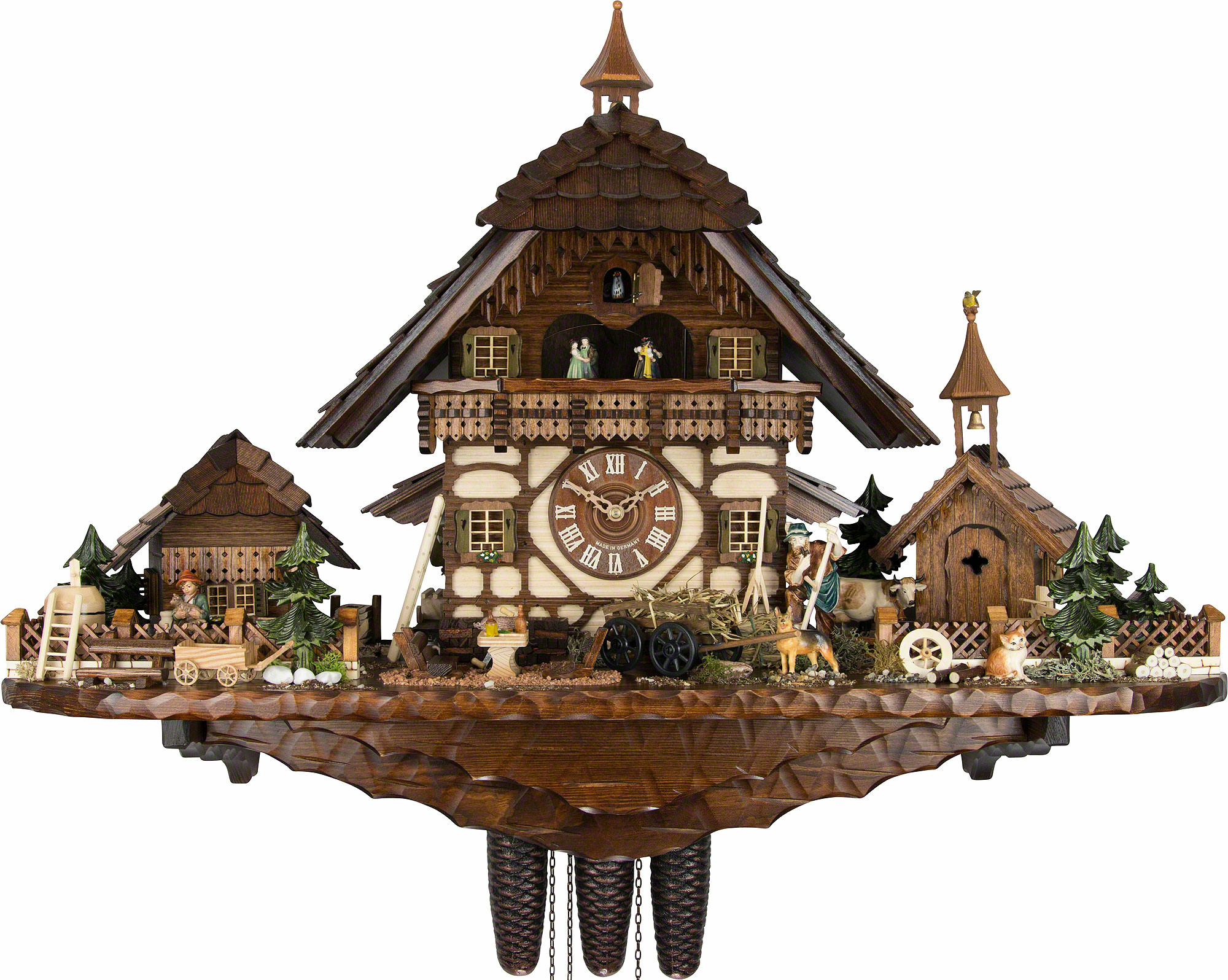Cuckoo Clocks and its History
Cuckoo Clocks has been fascinating among all age groups, from children to old aged people. Its regarded as one of the most iconic time tellers.
“But do you really know where did it come from or who invented the first cuckoo clock???????”
Well, actually its a mystery. It is somewhat unknown who invented it and where the first cuckoo clock was made. The history of the cuckoo clock is still a topic of debate among the world famous clock makers, nearly every cuckoo clock expert agrees that the development and evolution of the cuckoo clock occurred in the Black Forest area in southwestern Germany. The clocks popularity flourished in this region, and by the 18th century, cuckoo clock making had grown into an industry.
Lets try finding answer to some questions….
“WHO INVENTED THE CUCKOO CLOCK???”
Although the origins and whereabouts of the first cuckoo clock remain unknown, evidence dates similar, though primitive, objects to the mid-17th century. The first known description of a coo-coo clock dates back to 1629 when a German nobleman named Philipp Hainhofer described a clock belonging to Prince Elector August von Sachsen. In 1650, scholar Athanasius Kirche documented the elements of a mechanical cuckoo clock in an engraving in a handbook on music, Musurgia Universalis. In 1669, Domenico Martinelli penned a handbook on elementary clocks, Horologi Elementari, and described how the cuckoo call indicates the time.
And till date, If you talk to a person who genuinely knows about Cuckoo Clocks, ‘Black Forest’ the word that would travel their minds.
The first Black Forest cuckoo clock is attributed to Franz Anton Ketterer, a clock maker from the village of Schönwald, who, inspired by the bellows of church organs, started incorporating the cuckoo’s sound into clocks. By the mid-18th century, many clock-making shops in the region were producing cuckoo clocks with wooden gears. Today, Ketterer is known as one of the founding fathers of the Black Forest clock making industry.
“WHERE DO CUCKOO CLOCKS COME FROM???”
As said before, this cultural icon was blossomed and sophisticated by the skills of wood carvers and clock makers from the Black Forest region of Germany where there was a 100-mile stretch of pine trees so dense the sun struggles to reach the forest floor. By the end of the 17t century, it became a supplementary way of income during cold winter months for the farmers who used logs from the forest to build cuckoo clocks.
To this date, Black Forest cuckoo clock makers preserve the rich history of the region, using the same means as their forbearers to hand carved cuckoo clocks known for their quality and craftsmanship.
“HOW ARE CUCKOO CLOCKS MADE???”
Cuckoo clock makers have been still contriving clocks using the same time-tested mechanics and components of Black Forest cuckoo clocks from the 1700s. Its very interesting that all those complicated and intense carvings thats been decorating these kind of clocks start out as a block of wood.
So how it is made???
A clockmaker outlines the basic shape of the clock using a stencil and paint, then cuts it out with a jigsaw. Using up to 50 different knives, the artisan will begin carving the wood. Sometimes a case has no carving at all; instead, an artist paints an elaborate design. Other cuckoo clock cases have a combination of painting and carvings.
On the inside of the clock is a system of brass gears that keep time and trigger the cuckoo function. The components vary depending on whether it’s a one-day or eight-day movement. Every cuckoo clock also has two chains and two cast iron weights that regulate the speed at which the movement gears turn. To make the quintessential cuckoo call, air pumps in and out of two miniature bellows. Before each cuckoo, a hammer on the end of a wire hits a tiny gong. The number of cuckoos indicates the hour.
A cuckoo clock is deemed as an authentic Black Forest Cuckoo Clock when the clock and all of its essential parts — everything from the clock case and the decorative details to the bellows and the mechanical movement components — have been handmade exclusively in the Black Forest region of Germany.
“SO, ARE THERE ANY DIFFERENT STYLES OF CUCKOO CLOCKS???”
Till date, the functionality of the cuckoo mechanism has remained unchanged for more than 300 years, but the case designs have evolved.
The traditional style cuckoo clock AND chalet style clocks has been the most common and well known cuckoo clocks since long. The traditional style cuckoo clocks known for its classic carvings generally includes depiction of wildlife and nature in a traditional outdoor Black Forest setting.
While the chalet cuckoo clock is commonly associated with animated characters, such as woodchoppers, bell ringers, mill wheels and beer steins, as well as music.
Other popular styles include the railroad house clock, also known as the Bahnhäusle Uhren; antique and vintage reproductions; shield-style clocks; and modern-style cuckoo clocks. With the modernization of the clock designs, there are a number of cuckoo clocks that are nowadays made with battery powered operation, meaning there is no need to wind your clock every day or week. These battery powered clocks are called quartz cuckoo clocks and come in many different styles.








